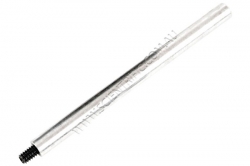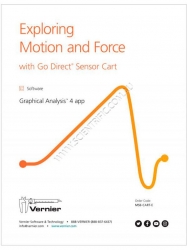209 low relevance results shown for 'Stem'. Prev |1|2|3|4|5|6|7|8|9 | Next | View 100 per page
Showing low relevance matches only. Return to normal search results
Earth Moon Sun - The Earth is part of a system of planets orbiting around a star (the sun) ACSSU150 Year 8 Biological Sciences
Organ Systems - Multi-cellular organisms contain systems of organs that carry out specialised functions that enable them to survive and reproduce ACSSU155 Year 8 Physical Sciences
Energy Forms - Energy appears in different forms, including movement (kinetic energy), heat and potential energy, and energy transformations and transfers cause change within systems ACSSU175 Year 9 Biological Sciences
Organ Systems - Multi-cellular organisms rely on coordinated and interdependent internal systems to respond to changes to their environment ACSSU176 Year 9 Biological Sciences
Ecology - Ecosystems consist of communities of interdependent organisms and abiotic components of the environment; matter and energy flow through these systems ACSSU179 Year 9 Chemical Sciences
Chemical Reactions - Chemical reactions, including combustion and the reactions of acids, are important in both non-living and living systems and involve energy transfer ACSSU188 Year 10 Earth and Space Sciences
Universe - The universe contains features including galaxies, stars and solar systems and the Big Bang theory can be used to explain the origin the universe ACSSU189 Year 10 Earth and Space Sciences
Global Systems - Global systems, including the carbon cycle, rely on interactions involving the biosphere, lithosphere, hydrosphere and atmosphere ACSSU190 Year 10 Physical Sciences
Energy Conservation - Energy conservation in a system can be explained by describing energy transfers and transformations ACSBL019 Year 11 Biodiversity and the interconnectedness of life
Describing biodiversity - Ecosystems are diverse, composed of varied habitats and can be described in terms of their component species, species interactions and the abiotic factors that make up the environment ACSBL029 Year 11 Biodiversity and the interconnectedness of life
Ecosystem dynamics - Models of ecosystem interactions (for example, food webs, successional models) can be used to predict the impact of change and are based on interpretation of and extrapolation from sample data (for example, data derived from ecosystem surveying techniques ACSCH061 Year 11 Molecular interactions and reactions
Aqueous solutions and acidity - Water is a key substance in a range of chemical systems because of its unique properties, including its boiling point, density in solid and liquid phases, surface tension, and ability to act as a solvent ACSCH091 Year 12 Equilibrium acids and redox reactions
Chemical equilibrium systems - Over time, physical changes and reversible chemical reactions reach a state of dynamic equilibrium in a closed system, with the relative concentrations of products and reactants defining the position of equilibrium ACSCH096 Year 12 Equilibrium acids and redox reactions
Chemical equilibrium systems - Equilibrium position can be predicted qualitatively using equilibrium constants ACSCH097 Year 12 Equilibrium acids and redox reactions
Chemical equilibrium systems - Acids are substances that can act as proton (hydrogen ion) donors and can be classified as monoprotic or polyprotic depending on the number of protons donated by each molecule of the acid ACSCH098 Year 12 Equilibrium acids and redox reactions
Chemical equilibrium systems - The strength of acids is explained by the degree of ionisation at equilibrium in aqueous solution, which can be represented with chemical equations and equilibrium constants (Ka) ACSCH099 Year 12 Equilibrium acids and redox reactions
Chemical equilibrium systems - The relationship between acids and bases in equilibrium systems can be explained using the Brønsted Lowry model and represented using chemical equations that illustrate the transfer of hydrogen ions ACSCH100 Year 12 Equilibrium acids and redox reactions
Chemical equilibrium systems - The pH scale is a logarithmic scale and the pH of a solution can be calculated from the concentration of hydrogen ions; Kw can be used to calculate the concentration of hydrogen ions from the concentration of hydroxide ions in a solution ACSCH101 Year 12 Equilibrium acids and redox reactions
Chemical equilibrium systems - Acidbase indicators are weak acids or bases where the acidic form is of a different colour to the basic form ACSCH102 Year 12 Equilibrium acids and redox reactions
Chemical equilibrium systems - Volumetric analysis methods involving acidbase reactions rely on the identification of an equivalence point by measuring the associated change in pH, using chemical indicators or pH meters, to reveal an observable end point ACSPH016 Year 11 Thermal nuclear and electrical physics
Heating processes - Heat transfer occurs between and within systems by conduction, convection and/or radiation ACSPH022 Year 11 Thermal nuclear and electrical physics
Heating processes - Two systems in contact transfer energy between particles so that eventually the systems reach the same temperature; that is, they are in thermal equilibrium ACSPH064 Year 11 Linear Motion and Waves
Linear motion and force - Momentum is a property of moving objects; it is conserved in a closed system and may be transferred from one object to another when a force acts over a time interval ACSPH065 Year 11 Linear Motion and Waves
Linear motion and force - Energy is conserved in isolated systems and is transferred from one object to another when a force is applied over a distance; this causes work to be done and changes to kinetic and/or potential energy of objects ACSPH073 Year 11 Linear Motion and Waves
Waves - A mechanical system resonates when it is driven at one of its natural frequencies of oscillation; energy is transferred efficiently into systems under these conditions ACSBL052 Year 11 Biodiversity and the interconnectedness of life
Ecosystem dynamics - Photosynthesis is a biochemical process that in plant cells occurs in the chloroplast and that uses light energy to organic compounds; the overall process can be represented as a balanced chemical equation ACSBL053 Year 11 Biodiversity and the interconnectedness of life
Ecosystem dynamics - Cellular respiration is a biochemical process that occurs in different locations in the cytosol and mitochondria and metabolises organic compounds, aerobically or anaerobically, to release useable energy in the form of ATP; the overall process can be repr ACSPH021 Year 11 Thermal nuclear and electrical physics
Heating processes - Change of state involves internal energy changes to form or break bonds between atoms or molecules; latent heat is the energy required to be added to or removed from a system to change the state of the system

























209 low relevance results shown for 'Stem'. Prev |1|2|3|4|5|6|7|8|9 | Next | View 100 per page
Showing low relevance matches only. Return to normal search results
Curriculum resources related to 'Stem'
ACSSU078 Year 5 Earth and Space SciencesEarth Moon Sun - The Earth is part of a system of planets orbiting around a star (the sun) ACSSU150 Year 8 Biological Sciences
Organ Systems - Multi-cellular organisms contain systems of organs that carry out specialised functions that enable them to survive and reproduce ACSSU155 Year 8 Physical Sciences
Energy Forms - Energy appears in different forms, including movement (kinetic energy), heat and potential energy, and energy transformations and transfers cause change within systems ACSSU175 Year 9 Biological Sciences
Organ Systems - Multi-cellular organisms rely on coordinated and interdependent internal systems to respond to changes to their environment ACSSU176 Year 9 Biological Sciences
Ecology - Ecosystems consist of communities of interdependent organisms and abiotic components of the environment; matter and energy flow through these systems ACSSU179 Year 9 Chemical Sciences
Chemical Reactions - Chemical reactions, including combustion and the reactions of acids, are important in both non-living and living systems and involve energy transfer ACSSU188 Year 10 Earth and Space Sciences
Universe - The universe contains features including galaxies, stars and solar systems and the Big Bang theory can be used to explain the origin the universe ACSSU189 Year 10 Earth and Space Sciences
Global Systems - Global systems, including the carbon cycle, rely on interactions involving the biosphere, lithosphere, hydrosphere and atmosphere ACSSU190 Year 10 Physical Sciences
Energy Conservation - Energy conservation in a system can be explained by describing energy transfers and transformations ACSBL019 Year 11 Biodiversity and the interconnectedness of life
Describing biodiversity - Ecosystems are diverse, composed of varied habitats and can be described in terms of their component species, species interactions and the abiotic factors that make up the environment ACSBL029 Year 11 Biodiversity and the interconnectedness of life
Ecosystem dynamics - Models of ecosystem interactions (for example, food webs, successional models) can be used to predict the impact of change and are based on interpretation of and extrapolation from sample data (for example, data derived from ecosystem surveying techniques ACSCH061 Year 11 Molecular interactions and reactions
Aqueous solutions and acidity - Water is a key substance in a range of chemical systems because of its unique properties, including its boiling point, density in solid and liquid phases, surface tension, and ability to act as a solvent ACSCH091 Year 12 Equilibrium acids and redox reactions
Chemical equilibrium systems - Over time, physical changes and reversible chemical reactions reach a state of dynamic equilibrium in a closed system, with the relative concentrations of products and reactants defining the position of equilibrium ACSCH096 Year 12 Equilibrium acids and redox reactions
Chemical equilibrium systems - Equilibrium position can be predicted qualitatively using equilibrium constants ACSCH097 Year 12 Equilibrium acids and redox reactions
Chemical equilibrium systems - Acids are substances that can act as proton (hydrogen ion) donors and can be classified as monoprotic or polyprotic depending on the number of protons donated by each molecule of the acid ACSCH098 Year 12 Equilibrium acids and redox reactions
Chemical equilibrium systems - The strength of acids is explained by the degree of ionisation at equilibrium in aqueous solution, which can be represented with chemical equations and equilibrium constants (Ka) ACSCH099 Year 12 Equilibrium acids and redox reactions
Chemical equilibrium systems - The relationship between acids and bases in equilibrium systems can be explained using the Brønsted Lowry model and represented using chemical equations that illustrate the transfer of hydrogen ions ACSCH100 Year 12 Equilibrium acids and redox reactions
Chemical equilibrium systems - The pH scale is a logarithmic scale and the pH of a solution can be calculated from the concentration of hydrogen ions; Kw can be used to calculate the concentration of hydrogen ions from the concentration of hydroxide ions in a solution ACSCH101 Year 12 Equilibrium acids and redox reactions
Chemical equilibrium systems - Acidbase indicators are weak acids or bases where the acidic form is of a different colour to the basic form ACSCH102 Year 12 Equilibrium acids and redox reactions
Chemical equilibrium systems - Volumetric analysis methods involving acidbase reactions rely on the identification of an equivalence point by measuring the associated change in pH, using chemical indicators or pH meters, to reveal an observable end point ACSPH016 Year 11 Thermal nuclear and electrical physics
Heating processes - Heat transfer occurs between and within systems by conduction, convection and/or radiation ACSPH022 Year 11 Thermal nuclear and electrical physics
Heating processes - Two systems in contact transfer energy between particles so that eventually the systems reach the same temperature; that is, they are in thermal equilibrium ACSPH064 Year 11 Linear Motion and Waves
Linear motion and force - Momentum is a property of moving objects; it is conserved in a closed system and may be transferred from one object to another when a force acts over a time interval ACSPH065 Year 11 Linear Motion and Waves
Linear motion and force - Energy is conserved in isolated systems and is transferred from one object to another when a force is applied over a distance; this causes work to be done and changes to kinetic and/or potential energy of objects ACSPH073 Year 11 Linear Motion and Waves
Waves - A mechanical system resonates when it is driven at one of its natural frequencies of oscillation; energy is transferred efficiently into systems under these conditions ACSBL052 Year 11 Biodiversity and the interconnectedness of life
Ecosystem dynamics - Photosynthesis is a biochemical process that in plant cells occurs in the chloroplast and that uses light energy to organic compounds; the overall process can be represented as a balanced chemical equation ACSBL053 Year 11 Biodiversity and the interconnectedness of life
Ecosystem dynamics - Cellular respiration is a biochemical process that occurs in different locations in the cytosol and mitochondria and metabolises organic compounds, aerobically or anaerobically, to release useable energy in the form of ATP; the overall process can be repr ACSPH021 Year 11 Thermal nuclear and electrical physics
Heating processes - Change of state involves internal energy changes to form or break bonds between atoms or molecules; latent heat is the energy required to be added to or removed from a system to change the state of the system
Products related to 'Stem'

Vernier ORP Sensor
VERNIER ORP SENSOR
The Vernier ORP sensor measures the ability of a solution to act as an oxidising agent or reducing agent. ORP stands for oxidation-reduction potential. ORP electrodes are often used to measure the oxidising ability of chlorine in swimming pools or to de...
Order code: ORP-BTA

Vernier BioChamber 250
VERNIER BIOCHAMBER 250
The Vernier BioChamber is useful for experiments investigating photosynthesis and cell respiration. The Vernier BioChamber 250 is a 250mL Nalgene bottle that can be used with a Vernier CO2 Gas Sensor or Vernier Go Direct CO2 Gas Sensor and a Vernier...
Order code: BC-250

Vernier BioChamber 2000
VERNIER BIOCHAMBER 2000
The Vernier BioChamber 2000 is a 2000mL plastic chamber that can be used with a Vernier CO2 Gas Sensor or Vernier Go Direct CO2 Gas Sensor and a Vernier O2 Gas Sensor or Vernier Go Direct O2 Gas Sensor to monitor gaseous carbon dioxide and oxygen l...
Order code: BC-2000

Vernier ORP Replacement Electrode
VERNIER ORP REPLACEMENT ELECTRODE
A replacement electrode for use with the ORP Sensor, the GW-EA Go!Wireless Electrode Amplifier and the EA-BTA Electrode Amplifier.
The Vernier ORP sensor measures the ability of a solution to act as an oxidising agent or reducing agen...
Order code: ORP-BNC

Vernier Accessory Kit
VERNIER DYNAMICS SYSTEM ACCESSORY KIT
The Vernier Dynamics System Accessory Kit consists of two small and one large t-nut fasteners. The t-nuts are used to attach accessories such as a Dual Range Force Sensor or the Low-g Accelerometer to the discontinued Vernier Dynamics...
Order code: ACC-VDS

Vernier Bumper and Launcher Kit
VERNIER BUMPER AND LAUNCHER KIT
The Bumper and Launcher Kit contains accessories for experiments involving the Vernier Dual-Range Force Sensor, Vernier Wireless Dynamics System and the Vernier Dynamics Cart and Track System. The accessories include two hoop springs of dif...
Order code: BLK

Vernier Friction Accessory
VERNIER FRICTION ACCESSORY
A friction pad to fit Vernier's metal Dynamics Carts in the discontinued VDS Vernier Dynamics System.
The friction pad enables the metal carts to move under a very consistent friction force and setting the friction amount is as simple as turnin...
Order code: PAD-VDS

Vernier Adjustable End Stop
VERNIER ADJUSTABLE END STOP
Attaches to the end of the Vernier Dynamics Track to prevent the cart from leaving the track.
The Vernier Adujustable End Stop is included with
Vernier Dynamics Cart and Track System
Vernier Dynamics Cart and Track System with Mo...
Order code: AS-VDS

Vernier Pulley Bracket
VERNIER PULLEY BRACKET
The Vernier Pulley Bracket attaches a Vernier Ultra Pulley to the Vernier Track that is included in the range of Vernier Dynamics Cart and Trac...
Order code: B-SPA

Vernier Imaging Hood
Discontinued - only 1 in stock
VERNIER IMAGING HOOD
The Imaging Hood enhances the image quality of gels being observed by eliminating most ambient light and reflections. Used as part of the Blue Digital Bioimaging System, the Imaging Hood is placed over the stand and BlueView Transilluminator when phot...
Order code: HOOD

Vernier LabPro / WDSS / DCU / Stir Power Supply
VERNIER LABPRO, WIRELESS DYNAMIC SENSOR SYSTEMS,DIGITAL CONTROL UNIT AND STIR STATION POWER SUPPLY
This 6 volt, DC, centre tip negative, 600 mA mains adapter (plugpack) is used with the Vernier:
LabPro
Wireless Dynamics Sensor System
Digital Control Unit,
Stir Statio...
Order code: PSLP-INT

Vernier Photogate / DFS Rod
VERNIER PHOTOGATE AND FORCE SENSOR ROD
A replacement rod for the one supplied with the Vernier Go Direct Force Sensor, Vernier Dual-Range Force Sensor, Vernier Go Direct Photogate, Vernier Photogate and Vernier Wireless Dynamics Sensor System.
Order code: ACC-ROD

Vernier Human Physiology Experiments Volume 2
VERNIER HUMAN PHYSIOLOGY EXPERIMENTS VOLUME 2
Vernier's Human Physiology Experiments Volume 2 is an expansion of HSB-HP Human Physiology Experiments to encourage students to investigate the physiology of the cardiovascular, muscular, respiratory and nervous systems.
T...
Order code: ALB-HP2

Vernier Human Physiology Experiments Volume 2 - Electronic
VERNIER HUMAN PHYSIOLOGY EXPERIMENTS VOLUME 2 ELECTRONIC
This electronic version of Vernier's Human Physiology Experiments Volume 2 is an expansion of HSB-HP Human Physiology Experiments to encourage students to investigate the physiology of the cardiovascular, muscular, ...
Order code: ALB-HP2-E

Biology with Vernier
BIOLOGY WITH VERNIER
Biology with Vernier is a lab book containing 31 experiments in cell respiration, photosynthesis, membrane diffusion, osmosis, human physiology, transpiration, fermentation and other important biology concepts.
Experiments are included for 12 Vernier...
Order code: BWV

Biology with Vernier - Electronic Version
BIOLOGY WITH VERNIER - ELECTRONIC
Biology with Vernier is a lab book containing 31 experiments in cell respiration, photosynthesis, membrane diffusion, osmosis, human physiology, transpiration, fermentation and other important biology concepts.
Experiments are included f...
Order code: BWV-E

Vernier Investigating Light (Elementary ebook)
VERNIER INVESTIGATING LIGHT EBOOK
Investigate light properties including how light changes with distance, reflects off different colours and varies with the seasons with your Year 3-6 students using this electronic book of experiments and a
Order code: ELB-LC-E

Vernier Environmental Science through Inquiry
VERNIER INVESTIGATING ENVIRONMENTAL SCIENCE THROUGH INQUIRY
Investigating Environmental Science through Inquiry is a lab book containing 34 inquiry-based investigations that prompt students’ interest in the environment. Each experiment includes a preliminary activity, tea...
Order code: ESI

Vernier Environmental Science through Inquiry - Electronic Version
VERNIER INVESTIGATING ENVIRONMENTAL SCIENCE THROUGH INQUIRY - ELECTRONIC
Investigating Environmental Science through Inquiry is a lab book containing 34 inquiry-based investigations that prompt students’ interest in the environment. Each experiment includes a preliminary ...
Order code: ESI-E

Human Physiology with Vernier
HUMAN PHYSIOLOGY WITH VERNIER
Human Physiology with Vernier is a lab book containing 24 experiments designed to encourage students to think about the physiology of various human organ systems by measuring the activity of the upper respiratory tract, the lungs, the heart, ...
Order code: HP-A

Human Physiology with Vernier - Electronic Version
HUMAN PHYSIOLOGY WITH VERNIER - ELECTRONIC
Human Physiology with Vernier is a lab book containing 24 experiments designed to encourage students to think about the physiology of various human organ systems by measuring the activity of the upper respiratory tract, the lungs...
Order code: HP-A-E

Vernier Human Physiology Experiments
VERNIER HUMAN PHYSIOLOGY EXPERIMENTS
The experiments in Vernier Human Physiology Experiments encourage students to investigate the physiology of the cardiac, muscular, respiratory, vascular and nervous systems. Experiment setup is minimal and students are collecting data ...
Order code: HSB-HP

Vernier Human Physiology Experiments - Electronic Version
VERNIER HUMAN PHYSIOLOGY EXPERIMENTS - ELECTRONIC
The experiments in Vernier Human Physiology Experiments encourage students to investigate the physiology of the cardiac, muscular, respiratory, vascular and nervous systems. Experiment setup is minimal and students are col...
Order code: HSB-HP-E

Vernier Exploring Motion and Force with GDX-CART - Electronic Version
VERNIER EXPLORING MOTION AND FORCE WITH GO DIRECT SENSOR CART
This electronic Vernier Lab Manual download includes seven motion and force experiments for Years 6-9 Middle School science that can be done with the Vernier Go Direct Sensor Cart. Collect, share and analyze se...
Order code: MSB-CART-E

Real-World Math with Vernier - Electronic Version
REAL-WORLD MATH WITH VERNIER - ELECTRONIC
Real-World Math with Vernier is a digital lab book containing 32 activities covering concepts such as linear, quadratic and periodic functions, statistics, systems of equations and many more. The activities are written for use wit...
Order code: RWV-E
209 low relevance results shown for 'Stem'. Prev |1|2|3|4|5|6|7|8|9 | Next | View 100 per page



 ,
,